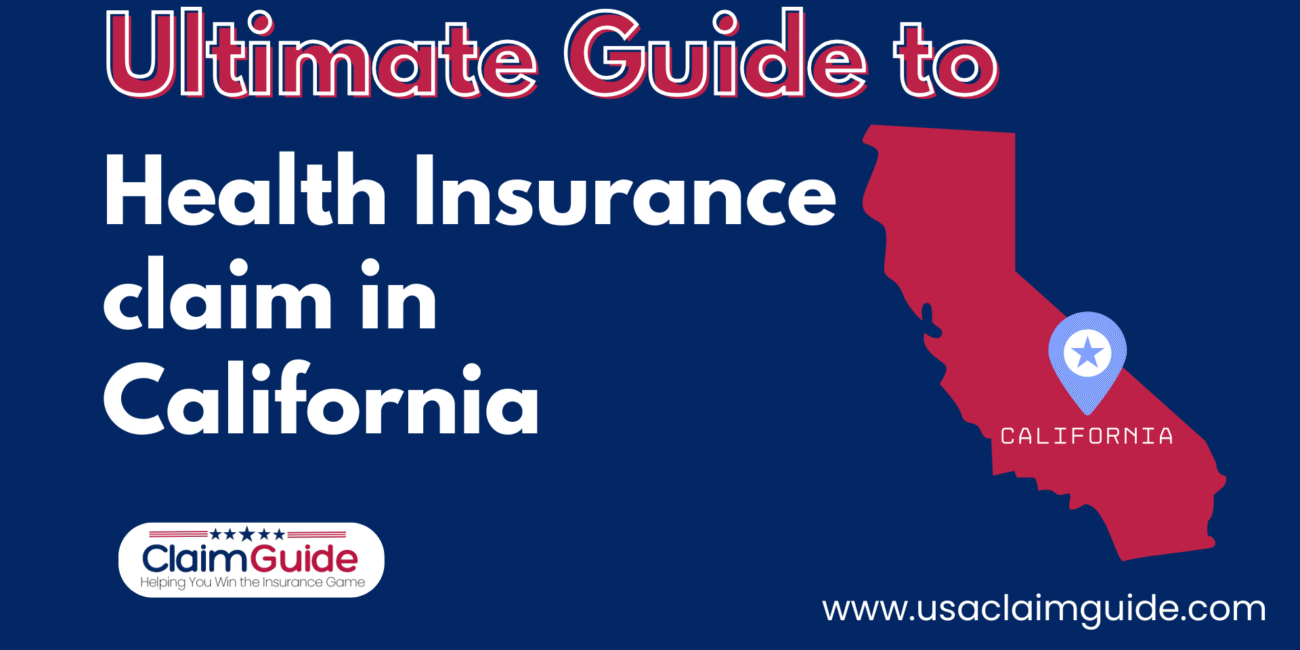Choosing the right health insurance plan in California for individuals and families has never been more essential. With rising medical costs, ongoing healthcare reform, and increasing demand for personalized care, Californians need to make informed decisions that go beyond just comparing premiums. Whether you’re searching for the best affordable health insurance in California, evaluating coverage options, or trying to understand your eligibility for subsidies, having a clear understanding of the system is crucial.
Whether you’re self-employed in Silicon Valley, raising a family in Sacramento, or retiring along the Central Coast, the healthcare system in California has distinct nuances that directly impact your choices. From local provider networks to income-based assistance programs, and from regional pricing variations to coverage mandates, Californians must weigh their options carefully to avoid unnecessary costs and lapses in care.
Health insurance in California is shaped by a unique blend of federal mandates and state-specific policies. From Covered California enrollment to private insurance providers and Medi-Cal health coverage eligibility, there are multiple paths to getting insured but not all of them offer the same value or protection. The decision you make today could significantly affect both your wallet and your access to care tomorrow.
In 2025, Californians are also dealing with a broader range of coverage concerns. For instance, many residents are asking, “Does car insurance cover engine failure in the U.S.?” highlighting the growing confusion between different types of insurance. While that question pertains to auto policies, it reflects a broader issue: most people don’t fully understand what their health insurance in California actually covers, or how to navigate exclusions, claims, and denied requests.
This guide will walk you through everything you need to know about how health insurance works in California, the cost of health insurance in California by income, how to file a health insurance claim in California, and how to legally avoid penalties if you’re uninsured. Whether you’re self-employed, a gig worker, part of a small business, or retiring soon, this article is packed with valuable, actionable insights.
Health Insurance in California: A Complete 2025 Guide
Navigating health insurance in California can feel like decoding a puzzle full of premiums, providers, and policies. Whether you’re a first-time buyer, switching plans, or trying to understand exemptions, this guide breaks down everything you need to know.
From costs and best providers to claims, penalties, and coverage options outside of Covered California, this article serves as your one-stop reference.
How Does Health Insurance Work in California?
Health insurance in California is structured to ensure that residents have access to affordable and comprehensive medical care. The state operates an insurance marketplace called Covered California, where individuals, families, and small businesses can compare and purchase insurance plans.
Plans fall under four “metal tiers” Bronze, Silver, Gold, and Platinum based on how costs are shared between you and the insurer. Subsidies are available for qualifying low- and middle-income residents, making premiums more affordable.
Key Features:
- All plans cover essential health benefits (EHBs)
- Protections for people with pre-existing conditions
- Preventive services at no additional cost
- Open Enrollment typically runs from November to January
- Special Enrollment is available after qualifying life events
How Much Is Health Insurance in California?
As of 2025, the average monthly premium for an individual health insurance plan in California ranges from $300 to $600, depending on:
- Your age
- County of residence
- Income (which determines subsidy eligibility)
- Plan tier (Bronze to Platinum)
Average Monthly Premiums by Plan Type:
| Plan Tier | Individual | Family of 4 |
|---|---|---|
| Bronze | $325 | $1,150 |
| Silver | $400 | $1,350 |
| Gold | $475 | $1,550 |
| Platinum | $560 | $1,720 |
Many Californians qualify for premium assistance under the Affordable Care Act (ACA) or state-level subsidies offered through Covered California.
What Is the Best Health Insurance in California?
The “best” health insurance depends on your specific healthcare needs, budget, and provider preferences. However, certain providers consistently rank high in customer satisfaction and coverage quality.
Top Health Insurance Providers in California:
- Kaiser Permanente – Integrated care model, excellent preventive care.
- Blue Shield of California – Large provider network, strong mental health services.
- Anthem Blue Cross – Wide availability, good for PPO seekers.
- Health Net – Competitive pricing, solid HMO options.
- Molina Healthcare – Great for low-income residents and Medi-Cal enrollees.
Comparison of Health Insurance Plans in California (2025)
Choosing the right health insurance plan in California for 2025 can be a complex task due to the variety of options available and the unique needs of each individual or family. To make an informed decision, it’s important to understand how different plans compare across key factors like premiums, coverage, network size, and customer satisfaction.
Types of Health Insurance Plans Available in California
California offers a mix of plan types through Covered California (the state’s health insurance marketplace), private insurers, and employer-sponsored coverage. The main types you’ll encounter include:
- Health Maintenance Organization (HMO)
Requires members to use a network of doctors and get referrals for specialists. Generally, HMOs have lower premiums and out-of-pocket costs but less flexibility. - Preferred Provider Organization (PPO)
Offers more flexibility by allowing members to see any provider, including out-of-network, without a referral. Premiums and copays tend to be higher. - Exclusive Provider Organization (EPO)
Similar to HMOs but often without the need for referrals. Members must use the network except in emergencies. - Point of Service (POS)
A hybrid model combining HMO and PPO features, requiring referrals but allowing some out-of-network visits at higher costs.
Key Comparison Factors
When comparing plans, consider these critical elements to align the insurance with your health and financial situation:
Monthly Premiums
Monthly premium costs vary widely depending on plan type, coverage level, and your age or location in California. For example, Bronze plans tend to have the lowest premiums but higher cost-sharing, while Platinum plans come with high premiums and lower out-of-pocket expenses.
Deductibles and Out-of-Pocket Maximums
Plans with lower premiums often feature higher deductibles the amount you pay before insurance kicks in. Out-of-pocket maximums cap your total yearly spending on covered services, providing financial protection during major health events.
Provider Networks
A plan’s network size can significantly impact your access to preferred doctors and hospitals. Larger networks offer greater choice but may come with higher premiums.
Covered Benefits and Services
Look beyond basic coverage to see if plans cover essential services such as mental health, maternity care, prescription drugs, telehealth, and preventive care. Some plans may also offer added wellness benefits like gym memberships or discounts on health programs.
Customer Service and Claims Processing
Customer support quality and ease of claims processing affect your overall experience. Check reviews, complaint ratios, and ratings from the California Department of Managed Health Care or independent consumer reports.
| Provider | Type | Network Size | Monthly Cost (Avg.) | Notable Features |
|---|---|---|---|---|
| Kaiser Permanente | HMO | Medium | $400 | Integrated system, excellent service |
| Blue Shield of CA | PPO/HMO | Large | $420 | Flexible plans, strong mental health |
| Anthem Blue Cross | PPO | Very Large | $450 | National coverage, large network |
| Health Net | HMO | Medium | $380 | Affordable, good for families |
| Molina Healthcare | HMO | Small | $320 | Good for Medi-Cal and low-income |

California Health Insurance Exemptions
Some Californians may qualify for an exemption from the state’s individual mandate penalty for not having health insurance.
Common Exemptions:
- Financial hardship
- Short coverage gap (less than three months)
- Membership in a recognized religious sect
- Incarceration
- Tribal membership or eligibility for Indian Health Services
You can apply for an exemption through Covered California or when filing your state taxes.
How to Claim Health Insurance in California: Step-by-Step Guide
Filing a health insurance claim in California might sound overwhelming, but understanding the process can empower you to get reimbursed faster and avoid unnecessary denials. Whether you’re enrolled through Covered California, private insurers, or employer-sponsored plans, the procedure usually follows a consistent framework.
Step 1: Confirm Whether You or the Provider Must File the Claim
In many cases, your health care provider (doctor, hospital, or clinic) will bill your insurance company directly. However, if:
- You used an out-of-network provider,
- Paid out of pocket at the time of treatment,
- Traveled outside the state or country and received emergency care,
…then you may need to submit the claim yourself.
Step 2: Collect Essential Documentation
Before filing, gather the following documents:
- Itemized bill or invoice from the provider (must include CPT or procedure codes)
- Explanation of Benefits (EOB) if already issued
- Proof of payment (receipts or bank transaction details)
- Your insurance ID card
- Any referral or authorization documentation (especially for specialist visits)
✅ Tip: Ensure that the bill clearly outlines services rendered, dates of treatment, and provider contact info.
Step 3: Download the Correct Claim Form
Each insurance company uses its own claim form. You can typically download it from your insurer’s official website. For instance:
- Anthem Blue Cross California: www.anthem.com/ca
- Kaiser Permanente: www.kp.org
- Covered California enrollees (if through partner plans): Refer to the individual carrier (e.g., Blue Shield of California).
Choose the form that matches your coverage type (e.g., medical, dental, mental health).
Step 4: Complete the Claim Form Accurately
Take your time to fill out:
- Your personal and policy information (name, DOB, plan number)
- Provider’s name, NPI number, and address
- Date(s) of service
- Type of services received
- Amount paid out of pocket
Double-check for typos or missing fields, which can delay processing.
Step 5: Submit the Claim and Supporting Documents
Once your claim form and documents are ready, submit them via:
- Online portal (if available through your insurer)
- Email (to the address listed on the form)
- Fax
- Mail (keep a copy and use tracking)
Make sure to submit within the timely filing window (often 90–180 days from the service date).
Pro Tip: Keep copies of everything especially if mailing your claim.
Step 6: Track the Claim Status
After submission, follow up:
- Use your insurance provider’s member portal to track processing.
- Call customer service for updates and confirmation of receipt.
- Expect processing time to take 15–30 business days.
You’ll eventually receive an Explanation of Benefits (EOB) detailing whether your claim was approved or denied, and any payment issued.
Common Mistakes to Avoid When Filing Health Insurance Claims
- Using the wrong claim form (dental instead of medical)
- Submitting after the filing deadline
- Missing or incomplete information
- Not attaching receipts or itemized bills
- Failing to confirm network status before treatment
Avoiding these errors can help you avoid unnecessary delays and frustrating claim denials.
Also Read: Biggest Mistakes to Avoid When Filing a Life Insurance Claim
📌 Special Cases to Know About in California
- Medi-Cal beneficiaries typically don’t need to file their own claims unless using out-of-state services.
- Covered California plan holders file claims directly with the private insurer, not the marketplace.
- Mental health services or telehealth sometimes follow separate claim procedures check your insurer’s guidelines.
📚 Want to Know More?
For more help with health insurance claims in California, visit:
- California Department of Managed Health Care (DMHC)
- Covered California Help Center
- California Department of Insurance
Tip: Most in-network providers file claims on your behalf. Out-of-network care often requires self-submission.
What to Do When Your Health Insurance Claim in California Is Denied
Steps to Appeal a Denied Claim:
- Review the Denial Letter: Understand the reason (e.g., out-of-network, non-covered service).
- Contact Your Insurer: Clarify the issue and ask for a reconsideration.
- Request an Internal Appeal: File a formal appeal with documentation and a letter explaining why the claim is valid.
- File an External Review: If the internal appeal fails, you can file with the California Department of Managed Health Care (DMHC).
📞 DMHC Help Center: 1-888-466-2219
🌐 https://www.dmhc.ca.gov
Can I Get Health Insurance Outside of Covered California?
Yes. While Covered California is the official marketplace, you can purchase health insurance directly through private insurers or brokers. This is useful if:
- You don’t qualify for subsidies
- You want a plan not listed on the exchange
- You’re seeking specialized coverage (like short-term or travel insurance)
However, plans outside of Covered California do not offer premium assistance, so you’ll pay the full cost.

Can I Claim an Exemption for Health Insurance in California?
Yes. If you meet specific criteria (financial hardship, religious objections, etc.), you can apply for an exemption.
Where to Apply:
- State tax return (Form 3853)
- Covered California exemption application during the enrollment period
Cheapest Health Insurance in California
The most affordable plans are Bronze-tier plans under Covered California. However, their low premiums often come with higher out-of-pocket costs.
Top Options:
- Medi-Cal (Free for low-income residents)
- Kaiser Bronze 60 HDHP
- Health Net Bronze Plan
Pro Tip: Use the Covered California calculator to compare costs and check for subsidies.
How to Avoid the California Health Insurance Penalty
California has an individual mandate requiring residents to maintain coverage or face a tax penalty.
Avoiding the Penalty:
- Buy coverage through Covered California or elsewhere
- Ensure it meets ACA requirements
- Claim an exemption if eligible
- File Form 3853 with your state tax return
💡 2025 Penalty: $900 per adult and $450 per child (or 2.5% of household income, whichever is higher)
Group Health Insurance in California
Group health insurance is a critical benefit that many California employers offer to attract and retain talented employees. Unlike individual health plans, group health insurance covers a collective pool of employees and often their dependents, providing more affordable premiums and broader coverage options due to risk-sharing among members.
What Makes Group Health Insurance Different in California?
California’s group health insurance market is distinctive because of state-specific regulations, diversity in employer sizes, and a variety of insurer options. Employers can choose from fully insured plans, where the insurer assumes all risk, or self-funded plans, which place financial responsibility on the employer but allow greater customization.
Types of Group Health Insurance Plans in California
- Fully Insured Plans
Most small and medium-sized employers opt for fully insured plans. The employer pays fixed premiums to the insurer, who manages claims and risk. This provides budget predictability but less flexibility. - Self-Funded (Self-Insured) Plans
Common among larger employers, self-funded plans allow companies to pay for employee claims directly, often using a third-party administrator (TPA) for claims processing. These plans can reduce costs long-term and allow tailored benefits but come with higher financial risk. - Level-Funded Plans
A hybrid of fully insured and self-funded, level-funded plans provide fixed monthly payments like fully insured plans, but if claims are low, the employer may receive a refund. This approach offers some budget control with risk protection.
Key Factors for Comparing Group Health Insurance Plans in California
When selecting group health insurance, employers should weigh several factors to ensure the best fit for their workforce and budget:
Plan Design and Flexibility
Employers can often choose from various plan tiers (Bronze, Silver, Gold, Platinum), and decide on cost-sharing features like deductibles, copays, and coinsurance. Some insurers provide customizable plans that include wellness programs, employee assistance programs (EAPs), or telehealth services.
Employee Eligibility and Coverage Options
Group plans usually cover full-time employees, but some insurers allow part-time or seasonal workers to be included. Employers should review eligibility rules carefully to avoid non-compliance with state laws.
Premium Costs and Contributions
Premiums depend on the number of enrolled employees, age, industry, and plan richness. Employers often share premium costs with employees, and the percentage paid by each party affects employee satisfaction and enrollment rates.
Network Access
Broad provider networks are essential to accommodate diverse employee locations and medical needs. Some group plans offer access to large national networks, while others focus on regional or California-specific provider groups.
Compliance with California Mandates
California has strict health insurance regulations, including coverage for mental health parity, reproductive health, and preventive services without cost-sharing. Group plans must align with these requirements to avoid penalties.
Top Group Health Insurance Providers for California Employers (2025)
| Provider | Plan Types | Network Coverage | Notable Features | Ideal For |
|---|---|---|---|---|
| Kaiser Permanente | Fully Insured HMO | Integrated California-wide | Coordinated care model, high employee satisfaction | Employers wanting seamless care coordination |
| Blue Shield of California | Fully Insured PPO, HMO | Large statewide network | Variety of plan designs, strong customer service | Employers seeking flexibility and broad networks |
| Anthem Blue Cross | Fully Insured PPO, HMO | Extensive California and national | Robust wellness programs, telehealth integration | Mid-to-large employers |
| Health Net | Fully Insured HMO, PPO | Focused California networks | Competitive pricing, good for small businesses | Small to medium employers |
| UnitedHealthcare | Fully Insured PPO | Large national and California networks | Innovative digital tools, wide network | Employers with multi-state employees |
Benefits of Group Health Insurance for California Employers
- Cost Savings: Group plans generally offer lower premiums per employee than individual plans due to risk pooling.
- Tax Advantages: Employer contributions are usually tax-deductible as a business expense.
- Attracting Talent: Offering health benefits improves recruitment and retention in a competitive market.
- Improved Employee Wellness: Many group plans include wellness incentives, preventive care, and mental health support.
Also Read: Employer Life Insurance Explained: What It Covers and What It Doesn’t
Challenges to Consider
- Administrative Complexity: Managing enrollment, claims, and compliance can require significant resources or third-party brokers.
- Premium Volatility: For smaller groups, premium increases can be unpredictable year to year.
- Employee Choice: Unlike individual plans, group plans may have limited options, which may not meet all employees’ preferences.
How to Choose the Right Group Health Insurance Plan in California
Employers should:
- Assess workforce demographics and health care needs.
- Compare plan premiums, deductibles, and out-of-pocket maximums.
- Review provider networks for employee convenience.
- Understand state compliance requirements.
- Consult with a licensed insurance broker or consultant specializing in California group plans.
Small employers (1–100 employees) may qualify for tax credits under the ACA.
Conclusion
Health insurance in California is more accessible and varied than ever before. Whether you’re an individual shopping for a personal plan or an employer looking to cover your team, understanding the system from costs to claims can empower you to make informed decisions.
Don’t let confusion be the reason you pay a penalty or remain uninsured. Use official resources, compare plans, and stay proactive.











